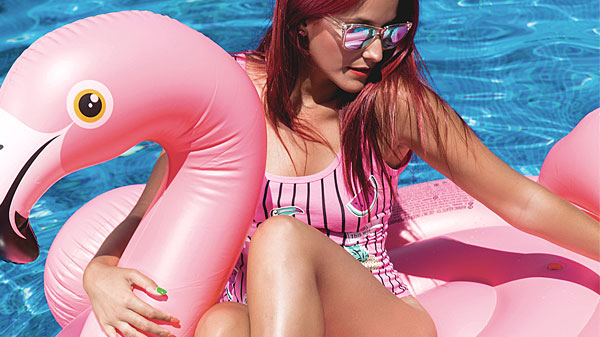
#NoFilter: The unseen side of social media ‘influencers’
We all know that girl on social media; the influencer. Her photos are pre-screened by Hudson, Sierra and Ludwig – her trusty team of Instagram filters. Her head tilts to the same side in every selfie, like the victim of a chronic disease whose sufferers speak only in hashtags.
On the surface, life seems easy for “influencers”, a budding group of social media mavens who are shaking up the global advertising and marketing sectors. Influencers allow companies to skirt the limitations posed by online ad blockers while also capitalising on consumers’ growing demand for online product reviews.

“Collaborations with influencers include product trials in which brands send influencers a gift and expect a mention on social media, as well as brand ambassador schemes for continuous collaborations and special event campaigns, such as hosting a yoga workshop for a wellness influencer to interact with her fans,” says Samantha Chung, Digital and Social Media Executive at Petrie PR, a public relations agency that has worked with high-profile influencers such as Mr and Mrs Monnet, a travel and lifestyle couple with 273,000 followers on Instagram.
According to AdmanGo, which monitors ad-related services in Hong Kong, brands pay mid-tier influencers (with at least 50,000 followers) up to HK$30,000 per collaboration. For top-tier influencers with more than 100,000 followers, payments can surpass HK$100,000. Top earners tend to be those specialising in beauty, fashion and travel but influencers in these fields must always be conscious of their public image – a fact that 22-year-old Franka Kit learned the hard way.
As a fan of YouTube videos and plainspoken makeup gurus such as Megan Parken (Meganheartsmakeup), Kit started her beauty channel in 2015. However, it got off to a rocky start as she struggled to amass more followers, combat negative feedback and manage a life spread thin by her digital career.
“When I started out, I was very unhappy,” says Kit. “Since I was still developing my video editing and content creation skills, guys in my school dorm would make fun of my videos and play them at full volume.” Others critiqued her appearance, but she didn’t let those comments defeat her.
She started out with just eight YouTube subscribers – all of whom were close friends – and worked her way up to nearly 49,000. Now, it’s not uncommon for fans to approach her on the streets of Mong Kok and ask her to pose for a photo with them. She has worked with big-name brands such as Lancôme, Guerlain and Benefit.

This particular morning, Kit is filming herself at home testing the latest Urban Decay cushion compact foundation sponsored by her own wallet. She then heads to class at the University of Hong Kong, where she is a final-year student, and posts an Instagram story in between lectures to inform fans whether the product is long-lasting. After class, she whizzes off to attend a skincare product launch. She cooks for her family in the evening then retreats to her room to edit photo captions or video sequences.
At 9pm – “the golden time” – Kit uploads her content and starts tackling her schoolwork. But she still has a few comments to reply to. Her Instagram inbox is swamped with requests from fans for personal skincare advice. Her Gmail is cluttered with cosmetic brands seeking collaboration opportunities. “I have so many ideas, but not enough time to edit my videos,” says Kit.
After graduation, she plans to pursue a full-time career in the marketing or law sector while managing her YouTube channel part-time. “Although my friends are supportive of my work, my family is more traditional. They don’t like the idea of a girl seeking so much publicity,” Kit says. “Also, it’s not possible to make a living off YouTube in Hong Kong.”
https://www.instagram.com/p/BVhjYWNFwi_/?hl=en&taken-by=frankakit
She makes between HK$100 and HK$1,000 per sponsored Instagram post, and her monthly revenue from business collaborations ranges from HK$1,000 to HK$4,000.
Samantha Chung, of Petrie PR, believes a full-time influencer with a personal project – for example, running a fashion label – can survive in Hong Kong. Solely living off paid posts, however, is unsustainable.
“Honestly, how many products can you promote on your account? If you promote a lot people will stop believing in you because you are taking money from brands,” she says. “The essence of being an influencer is to promote a lifestyle, not a brand.”
And while for some that lifestyle may be lounging on an inflatable pink bird by the beach, most take their influence a tad more seriously.
The full version of this feature appears on Gafencu Magazine’s March 2018 print issue as “#NoFilter” by Mary Hsiao Chu-an . You can download the free app for digital editions of the magazine.







